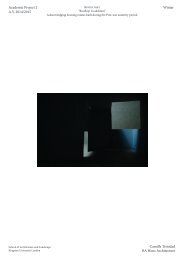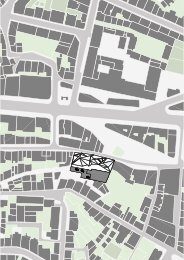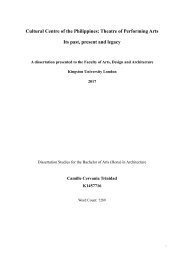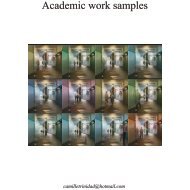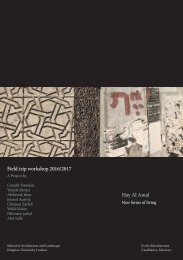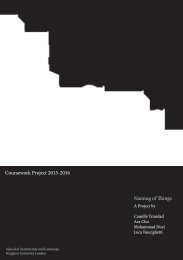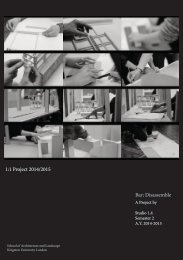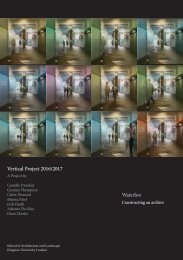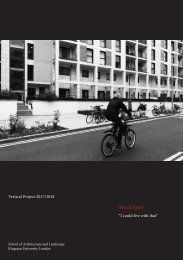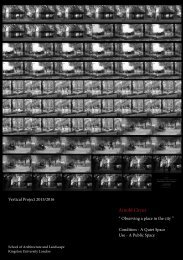Create successful ePaper yourself
Turn your PDF publications into a flip-book with our unique Google optimized e-Paper software.
When an area has seen an influx of creative people forming a new type of community, the area<br />
evolves into a trendy destination not just for locals and tourists but as well as the people in the<br />
art, music, fashion and design industry. Private land owners then use the rich cultural identity<br />
and booming immigration of people and small businesses as parts of their marketing strategy in<br />
building new real estates which not only affects the housing market but could also be damaging<br />
to locals’ livelihood and community.<br />
The project requires a scheme for a ceramic school located at an abandoned site at the edge of<br />
Largo do Intendente in Lisbon’s medieval quarter, Mouraria. Complete with studios, classrooms,<br />
workshops, common rooms, accommodation and building services, the project also has to deliver<br />
a particular programme focusing on the teaching practice of ceramics.<br />
The project’s aim is to respond to the gentrification of Intendente and to contribute positive social<br />
and economic impacts particularly on education, community development and place making.<br />
The idea is to create a centre for research and development of ceramics that promotes sustainable<br />
process of making and encourages to form relationships within and outside the community,<br />
in formal, informal and institutional level. The intention is to integrate the diverse cultural influences<br />
in contemporary Lisbon through encouraging the local residents to participate in free<br />
workshops, seminars and exhibitions. This will give an opportunity to learn ceramics through<br />
educational and cultural exchange, building international and local relations. Thus giving us the<br />
possibility to promote local livelihood workshops and equal opportunity amongst artists, students<br />
and community through product sales, festivals and promotional events.<br />
All of these can be achieved by having flexible working areas, to accommodate various types<br />
of makers and learners in large general studios which can double as lecture spaces. The gallery<br />
and reception are both public spaces related to the square, encouraging community engagement.<br />
Various studios, workshops and laboratories are designed on site for different types of ceramic<br />
practice and to avoid material contamination. Open home studios and working areas are also<br />
designed to encourage cross-pollination within the school, allowing academics and students to<br />
work side by side. But it also include formal and private teaching spaces exclusively for the use<br />
of the students and academics which includes the home studios, library, students and academics<br />
communal area, canteen and accommodation.<br />
Largo de Intendente: “Questioning urban regeneration”<br />
Academic Project 4 A.Y. 2015/2016 Winter<br />
Can architecture save a neighbourhood against gentrification?




